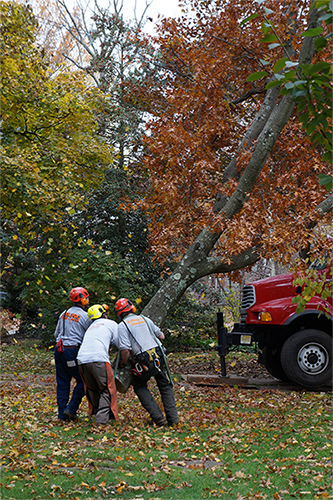 Sometimes a tree removal is as simple as a home owner needing more sunlight to the pool or they might be sick of leaf cleaning. Removal calls come into our office for many different reasons. One of many reasons for tree removal include but are not limited to construction related projects. Were the roots damaged? Was too much soil added after a project that actually causes roots to become weak or in some cases non-existent. When too much soil is added the oxygen available to roots is reduced. Picture this scenario, put 1 blanket over your face and breathe. Now do the same with 50 blankets. Roots need oxygen.
Sometimes a tree removal is as simple as a home owner needing more sunlight to the pool or they might be sick of leaf cleaning. Removal calls come into our office for many different reasons. One of many reasons for tree removal include but are not limited to construction related projects. Were the roots damaged? Was too much soil added after a project that actually causes roots to become weak or in some cases non-existent. When too much soil is added the oxygen available to roots is reduced. Picture this scenario, put 1 blanket over your face and breathe. Now do the same with 50 blankets. Roots need oxygen.
Deciding on the right time to remove a tree can be tough. There’s nothing wrong with giving the tree a chance to recover, whenever possible, by removing dead limbs and treating the tree for disease. Sometimes, even when a tree is dying, homeowners may wish to hold on to the tree if it’s not in danger of falling on people or structures. Dead trees do have their place in the landscape as places for birds to find food and nesting sites.
You may maintain your damaged trees for years by trimming dead or diseased limbs. Unfortunately, this can be expensive, and neighbors may worry the tree will fall on their property.
Removing a tree should never be done without professional assessment of its viability. Trees, after all, offer shade and hold soil in place, help clean air and water, and can enhance the value of a property. When deciding whether or not to remove a tree, a homeowner should consult specialists in tree removal with a certified arborist on board. Certified arborists have expert knowledge on tree care and are competent to evaluate the health of a tree for insect and disease management, and to advise on removal or maintenance.
So before you decide to remove that tree, let our certified arborists help you weigh the following factors.
What Species Is It?
Not all tree species are of equal value. Some are invasive, fast-growing “weeds” that present a number of problems. A tree with the following characteristics should likely be removed:
- weak wood prone to breaking
- drops large amounts of debris
- shallow roots
- subject to insect or disease infestation
- invasive species
State of Health
If more than 50 percent of the tree is damaged or dying, it’s probably better to have it removed.
Trunk Damage
If you see seams, dead branch stubs or older wounds that suggest there’s internal damage in the main trunk, removal may be advisable. Damaged areas less than 25 percent of the trunk’s circumference may heal.
Leaning
If the tree is leaning, it can be a sign of weakened roots. Most likely, it should be removed before it damages property or hurts someone.
Dead Branches on One Side
If the tree is lopsided from branches dying on one side of the tree, there may be root or trunk damage. An arborist should advise as to whether the tree can be saved.
